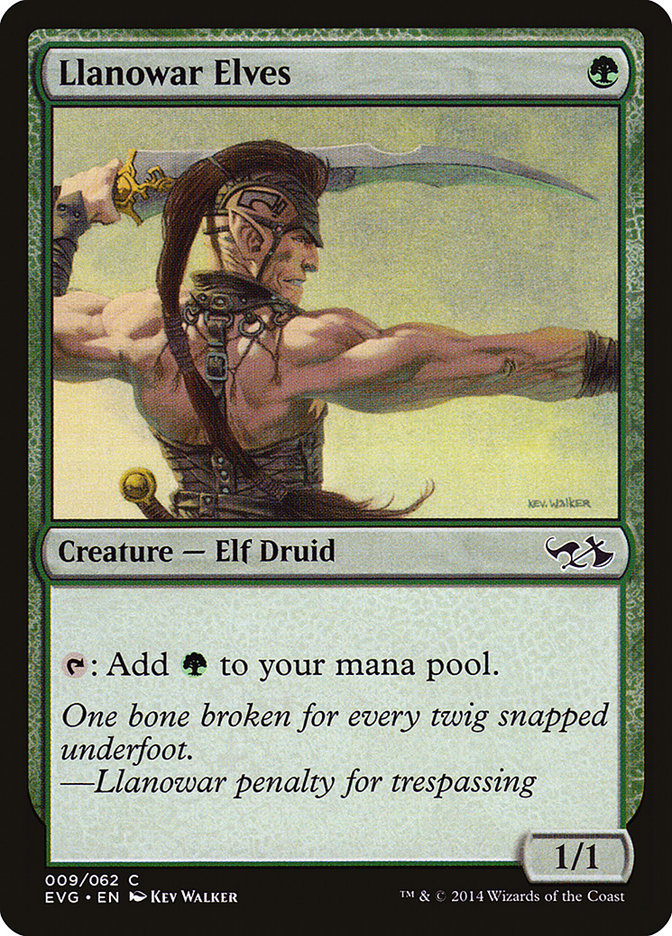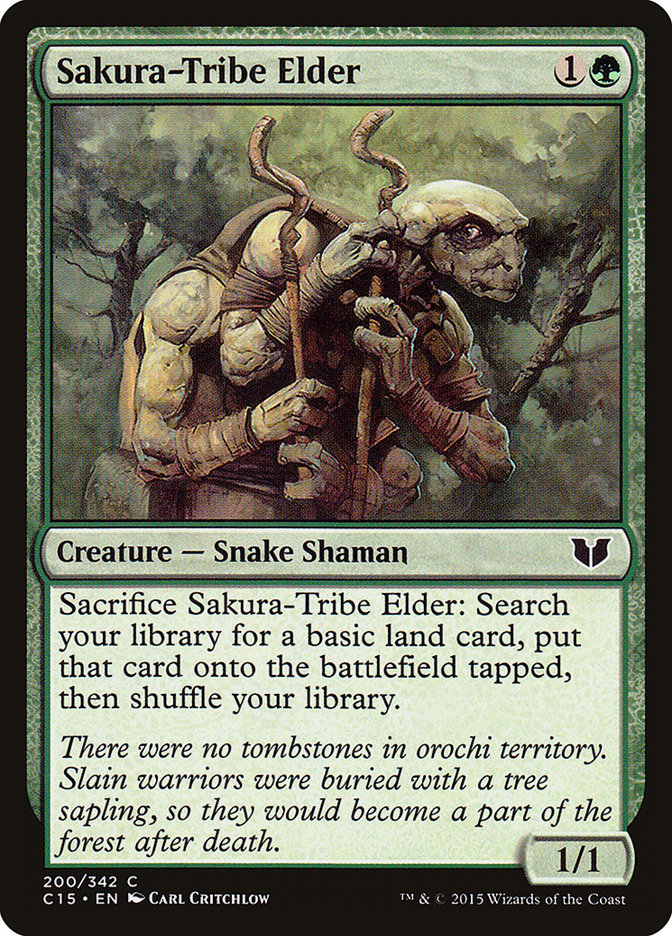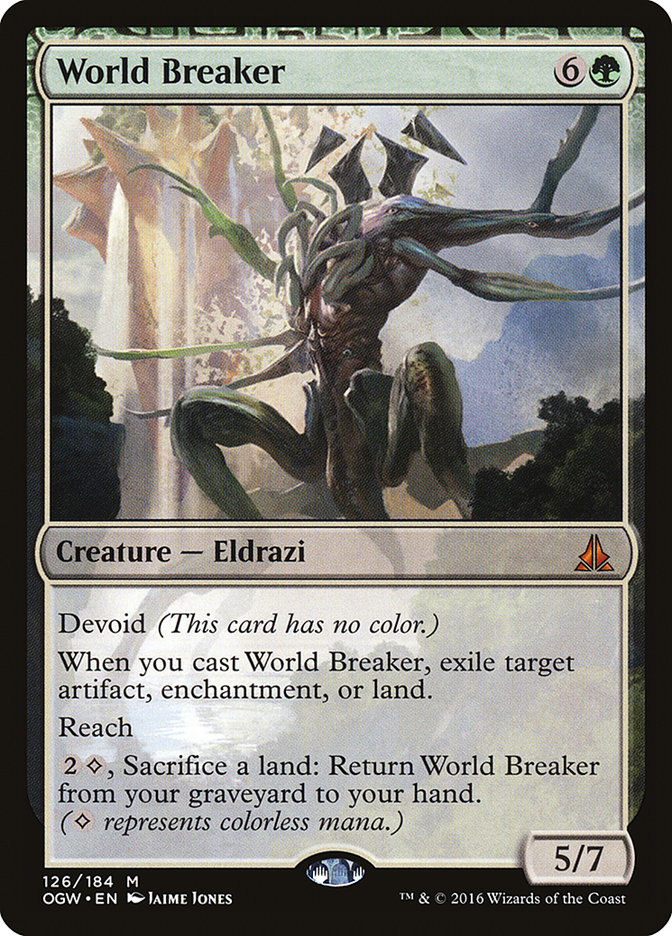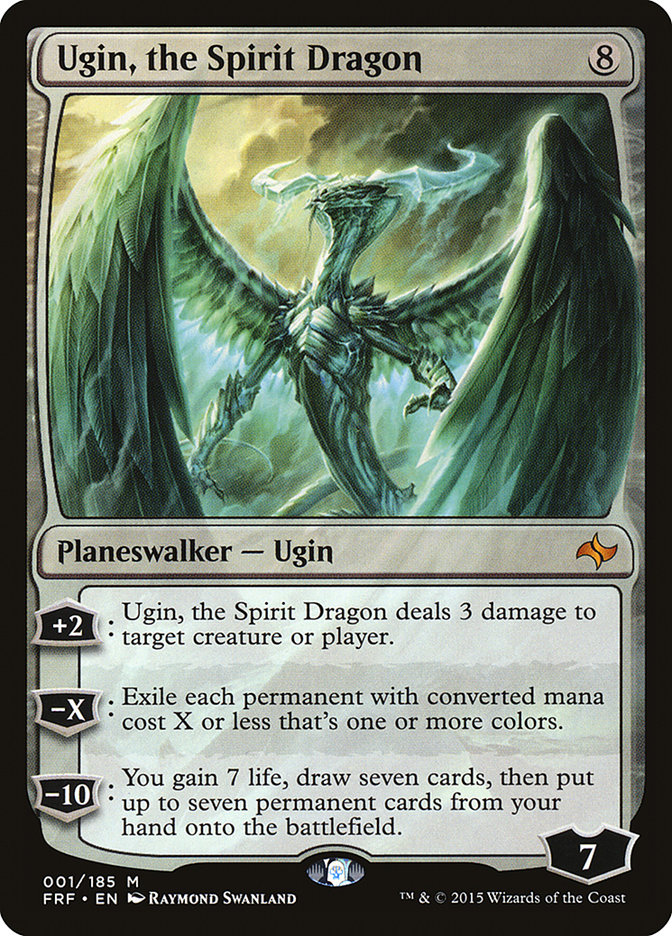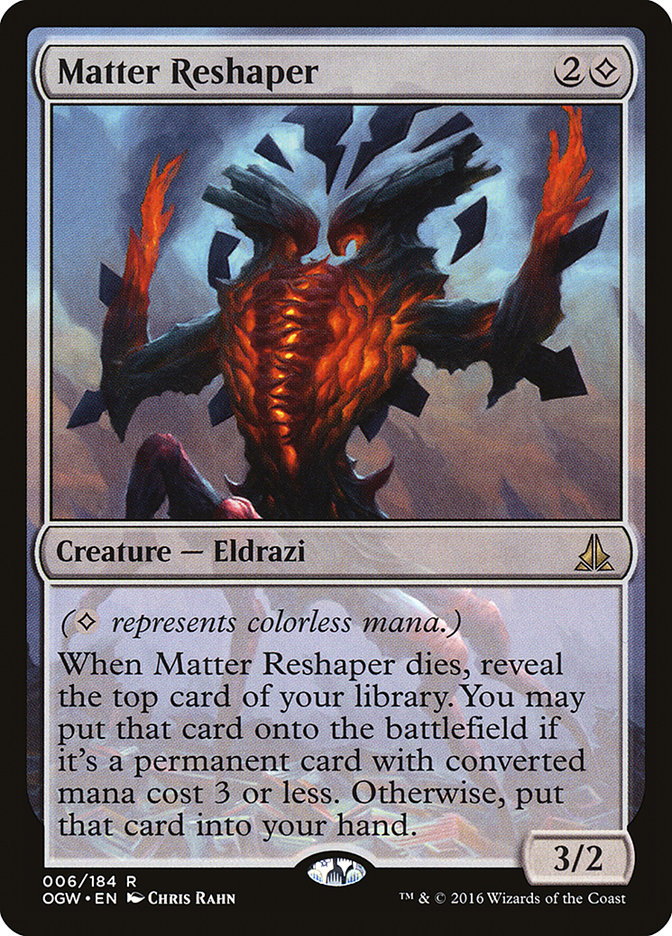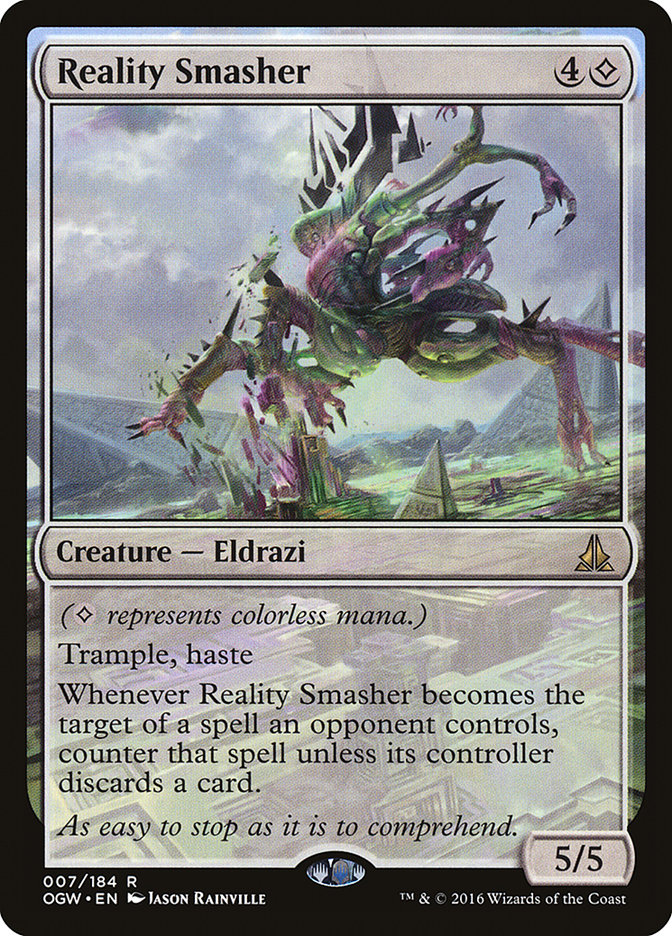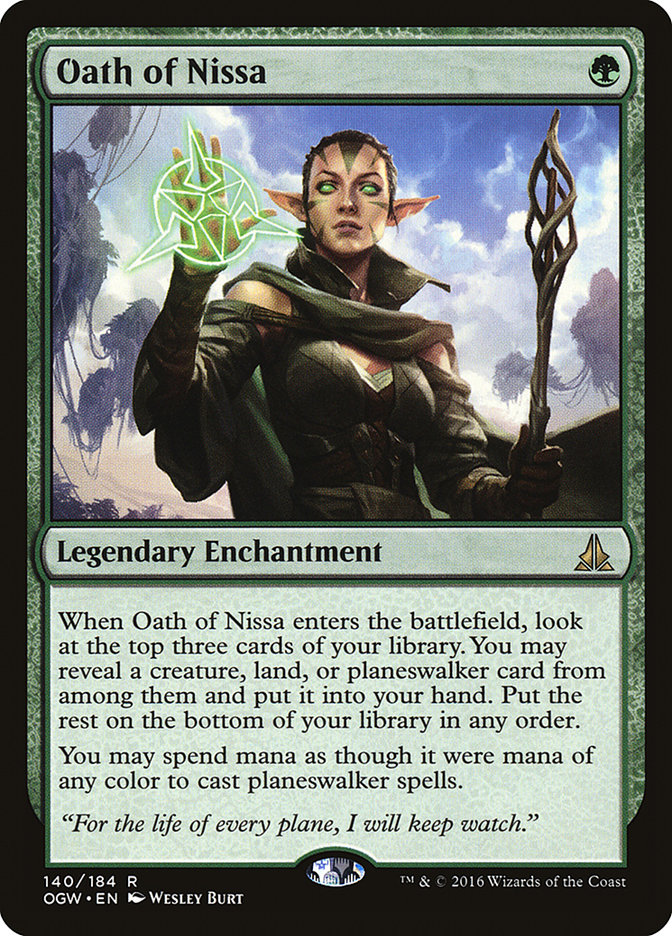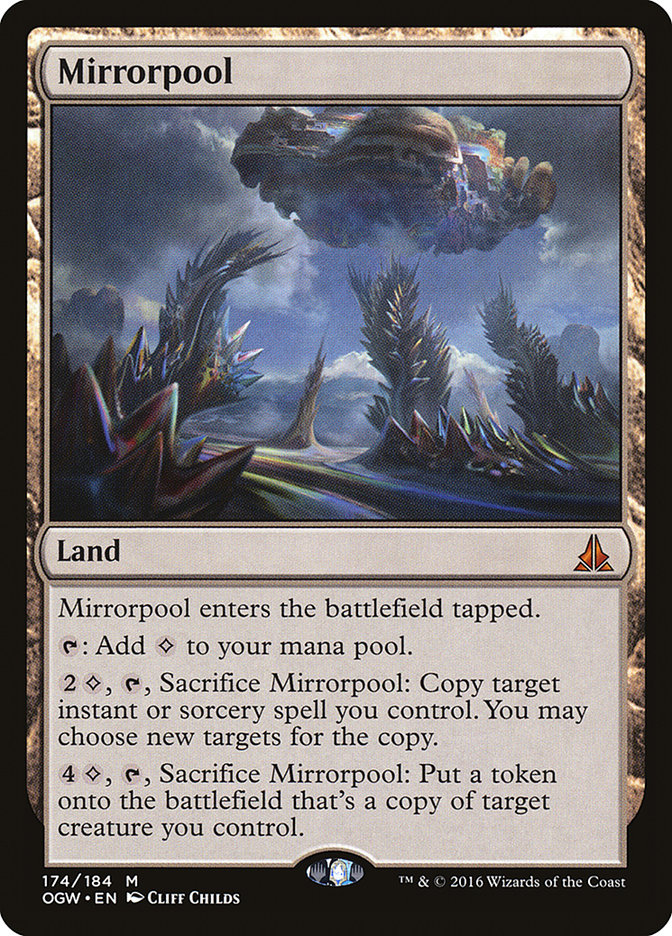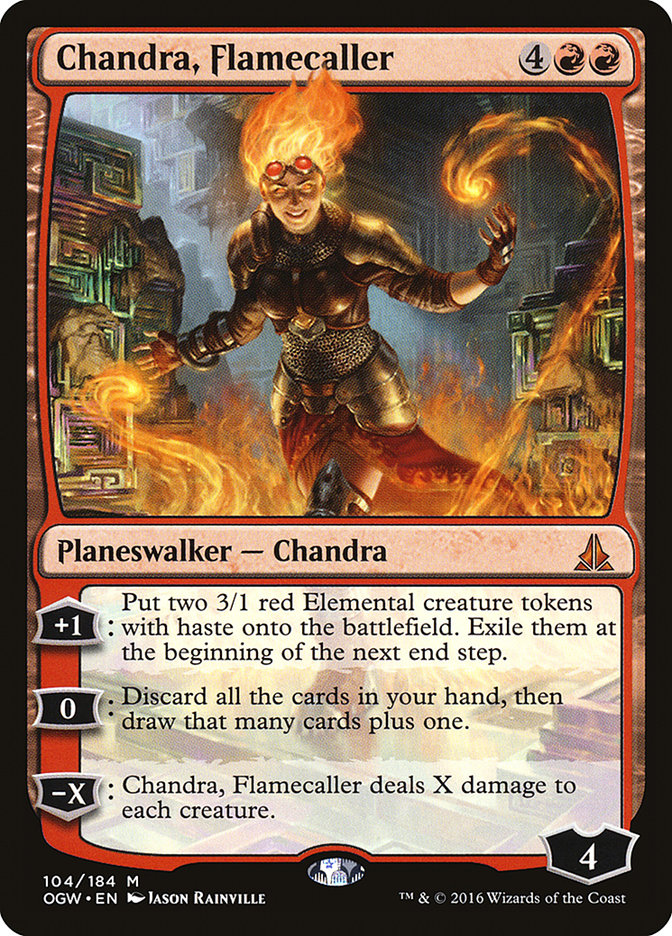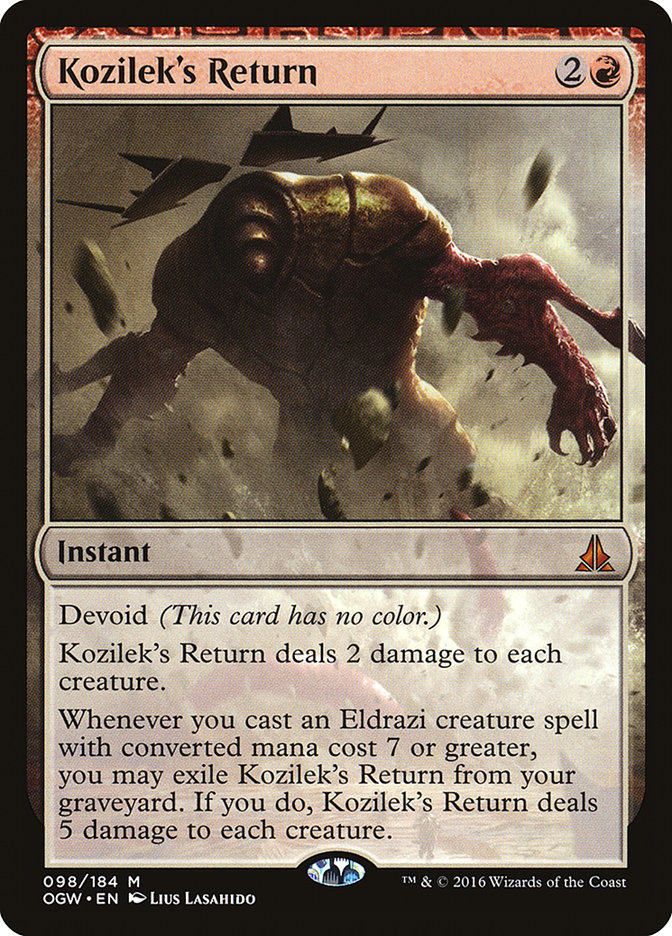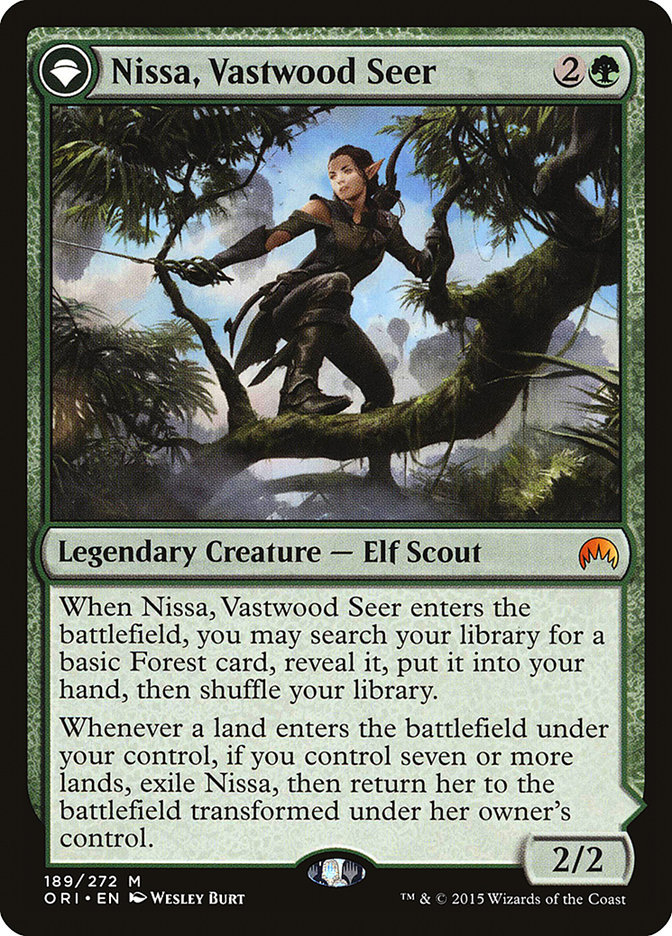Ramp in Magic has taken on many forms over the years. Various spells, creatures, and mechanics facilitate producing more mana than the rules normally allow, letting players sneak spells out a turn or two early or cast spells otherwise too expensive to reach during a typical game.
Ramping used to be a lot easier and more consistent. Until Elvish Mystic and its ilk left Standard, ramp could have meant just casting a three-mana spell on turn 2 or a four-mana spell on turn 3. This is what I call “fast” ramp, the idea that shaving even one turn off a creature’s casting window can reap huge rewards over the course of the game.
We saw the principle in action over this past weekend, where six of the eight decks in the Top 8 at #PTOGW were so-called “fast” ramp. Luis-Scott Vargas’s list is representative of the new “fast” ramp paradigm in Modern. Unsurprisingly, Eldrazi are at the center of it.
Creatures (26)
- 4 Simian Spirit Guide
- 2 Spellskite
- 4 Endless One
- 4 Eldrazi Mimic
- 4 Reality Smasher
- 4 Thought-Knot Seer
- 4 Matter Reshaper
Lands (24)
Spells (10)
Sideboard

To me, this Pro Tour proved irrefutably the power of “fast” ramp, and you can expect an Eldrazi deck will be a Modern contender until one of its pieces inevitably gets banned in three months or the metagame significantly adjusts.
In Standard we’ve lost that level of “fast” ramp power as Wizards of the Coast has downshifted ramp cards’ early strength in favor the long game, and in general I think that makes Magic better. “Fast” ramp has declined, but as I said earlier, that isn’t the only way to ramp; you can also be “big” ramp.
Creatures (17)
- 1 Emrakul, the Aeons Torn
- 4 Joraga Treespeaker
- 1 Kozilek, Butcher of Truth
- 4 Overgrown Battlement
- 1 Ulamog, the Infinite Gyre
- 4 Primeval Titan
- 2 Wurmcoil Engine
Lands (26)
Spells (17)

This deck gives us a glimpse into the past, where efficient mana creatures hustled out huge, powerful threats. Past decks had tools we could only dream of today, but Mono-Green Eldrazi was alive and well in 2010. It seems fitting that, at the center of my article today, we’re still talking about Eldrazi, both in the “fast” and “big” ramp camps.
Eldrazi Ramp in our current Standard has been a known quantity since Battle for Zendikar hit shelves last September. While it took a bit of time for the world’s professionals and brewers to find the right setup, soon Eldrazi Ramp became a real contender.
Creatures (17)
- 2 Dragonlord Atarka
- 4 Hangarback Walker
- 2 Oblivion Sower
- 3 Ulamog, the Ceaseless Hunger
- 1 Conduit of Ruin
- 1 Void Winnower
- 4 Jaddi Offshoot
Planeswalkers (4)
Lands (25)
Spells (15)

Green’s powerful “big” ramp spell, Explosive Vegetation, catapulted the format’s most powerful creatures onto the battlefield alongside Ugin, the Spirit Dragon. Going big became a legitimate, verifiable way to win games. With Oath of the Gatewatch, we were set up to get more tools for our ramp decks.
This is where I jump in.
As Oath of the Gatewatch and its mighty Eldrazi were spoiled in January, I started crafting a mono-green Eldrazi deck to rival the 2010 power level of ramp. Ulamog, the Ceaseless Hunger was immensely powerful and could singlehandedly obliterate an opponent in an aggressively short window.
By the time the whole set was spoiled, though, Eldrazi could follow two paths: big, mean Eldrazi way above the top of the curve of most decks or a lower-cost, midrange-type deck that featured the more middling Eldrazi like Thought-Knot Seer and Matter Reshaper.
At first, the big game seemed like the right approach, so after drafting up, proxying, and sleeving a first attempt, I started with this.
Creatures (15)
Planeswalkers (1)
Lands (23)
Spells (21)
- 4 Sylvan Scrying
- 4 Explosive Vegetation
- 1 Nissa's Renewal
- 4 Spatial Contortion
- 4 Oath of Nissa
- 4 Warping Wail
Sideboard

In my mind, this was the best place to start when going big. Sylvan Scrying seemed like the best two-mana land-oriented spell, as it could find critical nonbasic lands like Shrine of the Forsaken Gods and Sanctum of Ugin. Warping Wail and Spatial Contortion seemed like an invigorating salve for the deck, giving it some early answers to threats like Jace, Vryn’s Prodigy; Mantis Rider; and Warden of the First Tree. Explosive Vegetation would be the deck’s main ramp, powering up the Shrine of the Forsaken Gods and putting me in range for a turn 4 or turn 5 World Breaker or Ugin, the Spirit Dragon.
This was not a revolutionary deck. It seemed to provide a good match against the deck’s faster alternatives, whether Atarka Red or any mono-black aggro that might emerge with the powerful black Eldrazi spoiled in Oath of the Gatewatch.
I played it in proxied and eventually unproxied form as I picked up the deck’s necessary pieces for real. It played fine, but it was very linear and the variance was pretty high; if I didn’t draw the ramp, I was done. The removal was also far more conditional than I expected, and Spatial Contortion was much less impressive. Warping Wail was passable, but each of its modes was so specific that it never felt amazing. Countering an opponent’s Explosive Vegetation in the mirror was pretty fun, though.
I still struggled against the aggro matches a bit, and I found that I put little pressure on my opponent, even when I drew and cast World Breaker on time. The deck lacked “velocity,” the ability to provide powerful, snowballing threats.
That’s where the smaller Eldrazi and “fast” ramp came in. I tucked my head, charged forward on that plan, and built several different decks, all with the staples Matter Reshaper, Reality Smasher, and Thought-Knot Seer. Frankly, I mentally checked out with each one; the power level was there, but they weren’t particularly interesting. I imagined a lot of games where my Matter Reshaper and Thought-Knot Seer would be facing down my opponent’s Matter Reshaper and Thought-Knot Seer, and I wasn’t looking forward to it. There had to be another Eldrazi that could spice things up.
That seemed like so many Wastes. But I could play Ruin in Their Wake, breaking the two-to-four rule on noncreature permanents if I could make it consistent enough. Maybe I just wanted a whole mess of Wastes. Walker of the Wastes can get pretty big, and then it’s darn efficient. Hmm…
Got it!
Creatures (21)
- 2 Nissa, Vastwood Seer
- 3 World Breaker
- 4 Walker of the Wastes
- 4 Sylvan Advocate
- 4 Thought-Knot Seer
- 4 Matter Reshaper
Lands (25)
- 10 Forest
- 4 Evolving Wilds
- 10 Wastes
- 1 Mirrorpool
Spells (14)
Sideboard

This seemed way more fun! Walker of the Wastes can get huge!
Reality Smasher, in my opinion, had been the least impressive of the three mid-level rare Eldrazi from Oath of the Gatewatch, mostly because I felt like it was fine on offense if you were already ahead and perfectly average on defense. For five mana, I want a bit more out of my creatures.
Walker of the Wastes would most often be at least at large as Reality Smasher, and it could be pumped just by making land drops, making it a bigger threat with every ramp spell or land drop. Walker of the Wastes requires a considerable commitment, both in the manabase and the lands gotten from ramp spells, so I knew I had to be all-in to play Walker of the Wastes.
Sylvan Advocate seemed like a winner due to its efficiency, especially after ramping, and I liked World Breaker as a top end. Without cards like Shrine of the Forsaken Gods, hitting ten mana for Ulamog, the Ceaseless Hunger felt much less likely. Nissa, Vastwood Seer seemed like an easy choice, as she would flip off cards like Explosive Vegeation or even a late-game Matter Reshaper trigger into a land. On her planeswalker side, making a 4/4 would be fine to keep the pressure on, and if she’s hiding behind the considerable protection of large Eldrazi, her ultimate is more likely to be relevant to break a stalemate.
With a green-centered base, Oath of Nissa seemed like a nice way to keep things consistent. Ruin in Their Wake drives a hard bargain, so I needed to have a Wastes on turn 2 as often as possible. Evolving Wilds and the Oath both help with that. Remember that if you can cast Ruin in Their Wake to get a Wastes, every subsequent Ruin in Their Wake will be a Rampant Growth. Unlike Rampant Growth, though, Ruin in Their Wake does not require you to put the land onto the battlefield if you don’t want to, even if you meet the Wastes condition. If you haven’t made a land drop, you can just get a Forest or Wastes and play it for the turn.
Pulse of Murasa could be used early to recover an Evolving Wilds or late to recover a Walker of the Wastes to reapply immense pressure to your opponent. Nissa’s Renewal seemed like an amazing way to add three Wastes to the battlefield and gain lots of life, providing an instant bonus.
The land base is likely one of Standard’s cheapest with the Mirrorpool being the single most expensive land in the list. Mirrorpool has a fun interaction with Pulse of Murasa. You can cast the Pulse, target whatever you like, and then sacrifice Mirrorpool to copy the spell. Because sacrificing Mirrorpool is part of its cost, the copied Pulse of Murasa can target the Mirrorpool, giving you an opportunity to put it right back onto the battlefield. Likewise, Mirrorpool can copy a Walker of the Wastes in response to removal, or it can copy the single Nissa’s Renewal to provide six lands and fourteen life. Not bad for one little land!
In the sideboard, I liked Chandra, Flamecaller alongside Kozilek’s Return to sweep up messes. Mob Rule also seemed like a good choice in the mirror. I added Cranial Archive as a concession to Rally the Ancestor decks, and Jaddi Offshoot has been a popular go-to against aggro.
I sleeved up this exact list for FNM this past weekend to try the deck out.
In my first match, I played against a W/B Ally and lifegain deck with cards like Drana, Liberator of Malakir, Drana’s Emissary, and Felidar Sovereign. The Sovereign was pretty serious as I could not interact with it outside of combat, either pre- or post-sideboard. I eventually overwhelmed him with World Breakers and Chandras out of the sideboard after losing game 2 by being one damage short on a potential Mob Rule crackback.
In my second match, I played against Esper Dragons, a matchup I felt confident in. I clinched one of the three games, mostly on the back of Chandra, Flamecaller and World Breaker. However, Jace, Vryn’s Prodigy provided him too much value, and I couldn’t keep up.
I played against the more traditional R/G Eldrazi Ramp mirror in round 3, where we traded games of “who got their Explosive Vegetation first” before he smashed me up in game 3 as I struggled on lands. In game 3, I had Mob Rule in hand and could have stolen his Ulamog, the Ceaseless Hunger and Sylvan Advocate, teamed them up with my 5/5 Walker of the Wastes, and attacked back for nineteen, but he was unscathed at twenty life.
In my final chance to redeem myself, I played round 4 against a really awesome Goblin tribal deck. Although I clinched the first game with ease, he rallied in the final two, casting Sparkmage’s Gambit with incredible precision while my deck refused to draw any of my sideboarded Jaddi Offshoots and Kozilek’s Returns in a timely fashion, sending me to a 1-3 finish.
The deck had a lot of blanks revealed by the rigorous testing at FNM, while others overperformed. Sylvan Advocate was pretty bad, mostly because it was a vanilla 4/5 that oftentimes could not profitably block or attack. Thought-Knot Seer was conditional and was not particularly strong in combat-heavy games, mostly because it didn’t size well against cards like opposing Sylvan Advocates. Matter Reshaper was…fine. Never great, but fine.
Nissa, Vastwood Seer overperformed. She provided a lot of consistency and, once flipped, helped me feel very much in control of the game. Likewise, Walker of the Wastes was absolutely a must-answer, as it could often take opponents out of the game quickly, and it blocked very well. I was hugely impressed with it. The other Eldrazi I could take or leave, but Walker was the real deal.
Out of the sideboard, Chandra, Flamecaller was awesome. She provided a ton of depth with each mode: I –X’ed her a lot, and her +1 is a huge punch, on par with a Reality Smasher. Her 0 ability, while never activated, seemed very good while I was holding a hand full of Ruin in Their Wake, Evolving Wilds, and Explosive Vegetation with no targets (it happened twice during the night, so it’s possible). The deck needed a constant stream of threats, and Chandra was the answer every time.
Kozilek’s Return was honestly underwhelming, thanks to all the three-toughness creatures floating around in the tournament. I cast it once all night, killing a somewhat innocuous Drana’s Emissary. I drew it several times, but it was never the right card. The “Flashback” wouldn’t have been that good either, triggering off World Breaker alone and nuking the rest of my field. Pass. Cranial Archive was fairly awkward, and most of the time, I think if I just pushed my plan harder, that would have been fine.
So in a rebuild, I’d make a few minor changes.
Creatures (23)
- 3 Nissa, Vastwood Seer
- 4 Hangarback Walker
- 4 World Breaker
- 4 Walker of the Wastes
- 4 Thought-Knot Seer
- 4 Matter Reshaper
Lands (25)
- 10 Forest
- 4 Evolving Wilds
- 10 Wastes
- 1 Mirrorpool
Spells (12)
Sideboard

I found casting Chandra, Flamecaller was no problem. Explosive Vegetation could fetch the two Mountains alone and Oath of Nissa made red mana a non-issue. Four copies might seem like a lot, but she can discard extra copies of herself with her 0 ability, and you can spend her right away for a sweeper and recast another copy the next turn. Kozilek’s Return still isn’t great, but Radiant Flames isn’t an option, and with the inclusion of Hangarback Walker, there’s less downside to wiping out my team, too.
Ramp is very real, and the best hands can get you there in a flying hurry. I took a game against every opponent I played, and all of them were playing legitimate decks that can have a nuts hand, too. I was particularly surprised by the Goblin deck; watch out for that one!
Have you tried Walking some Wastes? Have you found another color that helps make multiple Wastes powerful?


